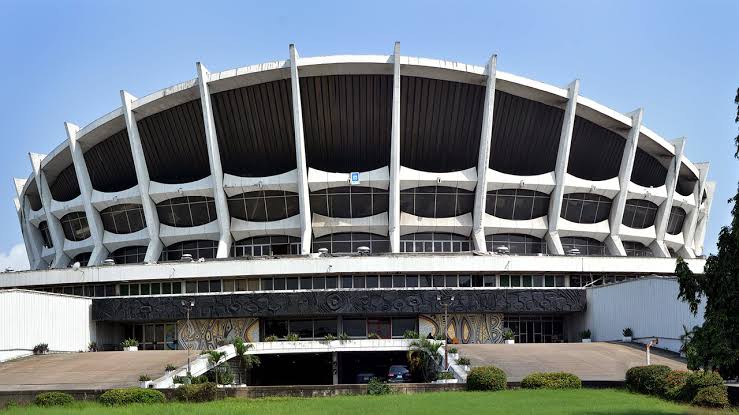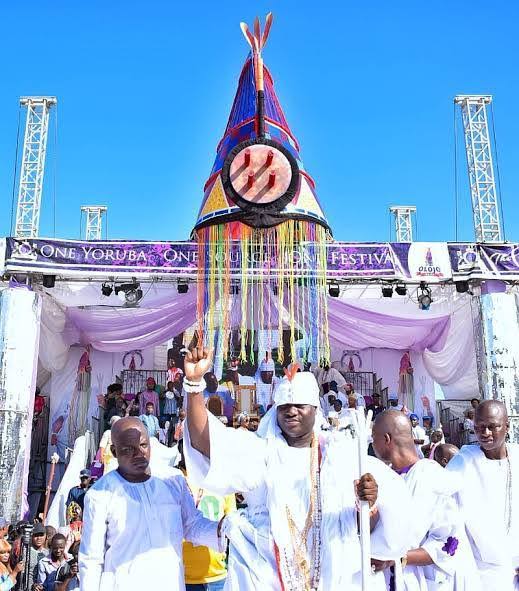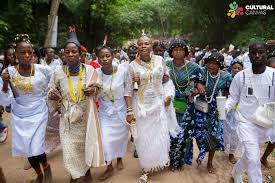INTRODUCTION
The Orosun Festival is an annual cultural and religious festival celebrated by the people of Idanre (Oke-Idanre) in Ondo State, usually taking place either in May or early June every year. It honours Orosun, a powerful female figure in Idanre as established by oral history who, after death, was deified and became the focus of annual rites for fertility, protection and communal well-being.
ORIGINS AND MYTHIC HISTORY
The story of Orosun is a combination of both local history and Yoruba myth. Oral accounts record Orosun as a mysterious, heroic woman associated with healing, fertility and strong ties to early Idanre founders (stories link her to Olofin Aremitan, moved from Ife to Idanre).
According to tradition, Orosun suffered injustice (some versions say assassination) at the foot of the highest Idanre hill. After divination by Ifá, the people were instructed to deify her and hold annual ceremonies in her honour, hence the OROSUN FESTIVAL came to being, to appease her spirit and secure blessings for the community. Scholars treating Idanre micro-history, traced the festival practices to these oral narratives and to the town’s founding myths.
PERSONALITIES, OFFICES AND GROUP INVOLVED.
OROSUN (the deity/heroine): Central Figure of Reverence – the festival is a remembrance and propitiation of her spirit. The OWA OF IDANRE (the king): The Owa and Senior Chiefs play ceremonial roles, in former times, certain royal processions and ritual enactments were restricted to the palace and town officials. Contemporary accounts note that the king symbolic presence (and sometimes public dance/procession) during the festival rites can not be ignored.
HIGH PRIESTS/PRIESTESSES AND THE OROSUN PRIESTHOOD
These are custodians of the rites who perform offerings, divination and lead the sacred climb/rituals. Devotees and the wider community men and women from Idanre and diaspora return for the rites while the participants often wear ritual white when ascending the hill.
(Names and lineages can vary between retellings; much of the festival’s meaning is carried in oral transmissions and by the priestly families who hold the rites.)
THE CELEBRATION OF THE FESTIVAL, RITUALS, PAGEANTRY AND SEQUENCE. While practices vary with time and local committees, the recurring elements include:
1. Timing & Processions: The time and processions take place in late May or June; several days of ceremonies that combine religious rites, music, dance and communal feasting. .
2. Climbing the Hills / Sacred Sites: At this stage, devotees are dressed predominantly in white, often climb parts of Idanre hills as an act of devotion and to perform rites at specific shrines associated with Orosun. The hills themselves (Idanre/Oke-Idanre) are integral to the ritual landscape.
3. Offerings and Libations: Traditionally, offerings (animals historically, now often livestock) and libations are made to propitiate the deity. (Historic sources note earlier practices that evolved over time, e.g., the abandonment of human sacrifices in the late 19th century and substitution with animal offerings.)
4. Music, dance and masquerades: Drumming, singing, and indigenous dance troupes showcase Idanre’s cultural styles; sometimes masked figures and special dances linked to other deities or to royal history perform.
5. Public speeches and cultural showcases: Modern festivals often include speeches by chiefs and officials, cultural displays, entrepreneurship fairs and invitations to tourists and government representatives.
CULTURAL MEANING AND SIGNIFICANCE. The Orosun Festival is multilayered in meaning e. g.
a) Fertility and Healing: Orosun is commonly associated with fertility and the protection of children and families.
b) Justice and Memory: the festival is a communal acknowledgment of past wrongs (oral histories frame Orosun as wronged), a ritual reparation that transforms personal tragedy into enduring communal blessing.
c) Identity and Continuity: for Idanre people the festival affirms lineage, royal continuity and links to broader Yoruba myth (ties to Olofin, Oduduwa/Ifè narratives). It’s a living repository of local history.
PROSPERITY, TOURISM AND ECONOMIC IMPACT.
Orosun has become an important cultural tourism draw because it’s staged against the dramatic backdrop of the Idanre Hills, themselves a major attraction (rock outcrops, historic settlements, palace remains). Studies and site reports indicated significant visitor inflows during festival years, research showcasing sacred groves and Idanre’s sites recorded festival visitor numbers that ranged (in earlier surveys) from a few hundred to several thousand depending on the year and promotion efforts.
Festival periods boost local commerce (hospitality, food vendors, crafts, transport and informal services), while modern festival programming often seeks sponsorship and state support to expand the event’s reach.
Internationally, Idanre Hills are also on Nigeria’s UNESCO tentative list (they are recognized for their combined natural and cultural values), which opens the door to more systematic heritage tourism planning and protection that can benefit the festival and local economy.
OTHER EVENTS TIED TO IDANRE’S RITUAL CALENDERS.
Idanre’s cultural life includes other festivals and commemorations, Ogun festival, Osu Ifa, and more recent community events like the Mare (sports/trekking mountain event), many of which interweave with Orosun’s rites or are scheduled to complement tourism programming at the hills. The town’s calendar blends sacred rites with secular cultural showcases to attract both diaspora Idanre indigenes and visitors.
MODERNIZATION AND CONTINUITY.
-From ritual secrecy to public festival: Some rites that were once restricted to priests and royals are now performed with public involvement and media coverage.
-Shift in sacrificial practice: Earlier literary and oral records note changes (e.g., the end of human sacrifice in the late 19th century and subsequent substitution with animal offerings).
-Tourism and state engagement: Recent editions have seen overtures to state and national cultural agencies, calls for funding and organized cultural programmes to make Orosun a marquee event for Ondo State.
CONSERVATIONS, CHALLENGES AND OPPORTUNITIES.
(I) Challenges: Heritage protection vs. mass tourism: Balancing sacredness with visitor access; sensitive shrines and ecological zones around the hills need careful management.
(ii) Funding and infrastructure: Local vendors and custodians request more infrastructure (sanitation, accommodation, security) and promotion to convert festival visitors into recurring tourists.
OPPORTUNITIES
(I) Sustainable cultural tourism: Packaging the festival with interpretive tours of Idanre Hills (UNESCO-style management plans), community-run guesthouses, craft markets and guided climbs.
(ii) Cultural education & archiving: Recording oral histories, training local guides, and producing bilingual materials to attract international visitors and researchers.
PLAN FOR POTENTIAL TOURISTS
(a) TIME: Late May to early June is the usual window but verify dates (committees sometimes set exact days annually).
(b) RESPECT: Wear modest clothing; if participating in ritual spaces follow priestly instructions (white is traditionally favored for certain rites).
(c) GUIDES AND FEES: Hire local guides for hill climbs and respect any fees or offerings requested at shrines, these often support shrine upkeep and custodial families.
(d) BOOK AHEAD: Accommodation in nearby towns can fill quickly during festival week; consider travel and local transport arrangements.
SUMMARY
Orosun in Idanre is not just a colourful event, it is a ritual connecting pipe for memory, identity and social cohesion. It ties the living community to its mythic past, fosters livelihoods through cultural tourism, and provides a hands-on example of how sacred landscapes and festivals can be conserved while contributing to local prosperity.
For anyone interested in Yoruba history, ritual studies, heritage tourism, or simply spectacular cultural pageantry set against one of Nigeria’s most impressive hillscapes, Orosun and the Idanre Hills are deeply worth experiencing.







